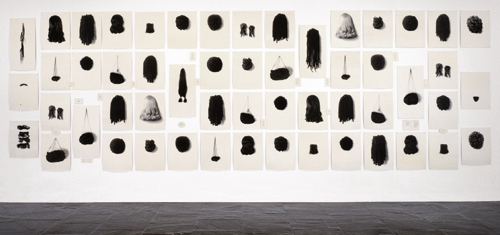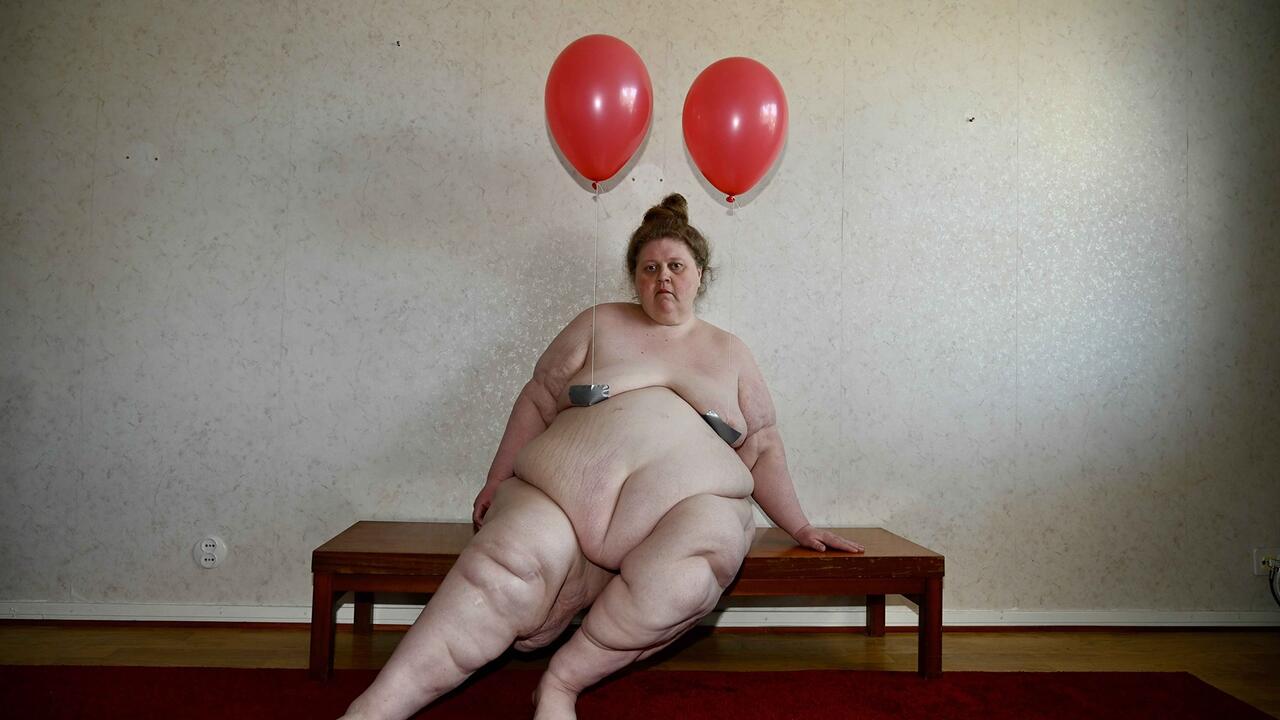Lorna Simpson
Haus der Kunst
Haus der Kunst

Typically 1980s? Lorna Simpson’s art deals with identity, gender, race, history and the body – issues that were ‘inherited’ from political and activist art of the 1960s and ’70s. These topics would set the tone for art discourse in and beyond the US in the ’80s as cultural studies impressed on art practice. Nonetheless, as Simpson’s first European retrospective at the Haus der Kunst makes clear, her art is anything but outmoded. Her approach shows more recent Neo-Conceptual art that there is more to the use of text, the reduction of formal mediums and the citation of high and popular culture than the mere combination of aesthetic strategies.
The photography-and-text piece Twenty Questions (A Sampler) (1986) is a powerful early example of this. Four photographs of the back of a dark-skinned woman’s head are shown with five questions posed on small panels below: ‘Is she pretty as a picture / Or clear as crystal / Or pure as a lily / Or black as coal / Or sharp as a razor’. The work refers to the eponymous game where one player imagines a person or thing which other players try and identify by asking yes-or-no questions. Twenty Questions (A Sampler) refuses to play this game as the face of the subject is not shown, and the questions are so open that no accurate answers to them can be expected (the artist has not even ended them with question marks). Here Simpson is playing with both racist clichés – ‘black as coal’ – and poetic ones – ‘pure as a lily’ – but the expected meaning of these formulations fails to materialize, opening up a space for ‘complex characters that live outside of time, place, identity and race’, as Simpson herself has put it in the catalogue for the exhibition. Poetry and politics are not in conflict here, but are rather precisely composed, prying apart customary ways of seeing things. By this Simpson is able to pose questions about gender and identity without falling into traps of ideological dogmatism. Her surprising use of imagery consistently debunks hasty interpretations.
The Munich exhibition devotes an entire room to Simpson’s engagement, since the late 1980s, with the topic of hair. Prominent among these works, the installation Wigs II (1994–2006) displays an impressively complex interplay of text and image. Sixty-six figures made from wigs hang on a wall in four rows, 14 of them are captioned. The piece addresses the intersection of gender issues and racism in the US that lead to African-American women wearing wigs to make their hair look ‘whiter’. The wall texts bear seemingly harmless adages such as, ‘first impressions are the most lasting’. However, these ‘first impressions’, are determined by social conventions such as ideals of beauty, the racist side of which clearly emerges here. The wigs that are not accompanied by text also tell stories, but these are generated by the observer’s own interpretation and experience. This type of semantic production is also contingent on normative narratives: there is no ‘authentic’ or ‘natural’ reading.
Along with photography-and-text works, this admirable exhibition shows collages, watercolours and videos from the past 30 years. The video installation Momentum (2010), arguably the most ‘personal’ work in the exhibition, centres on a childhood memory. A double projection shows young ballet dancers, all of them wearing Afro wigs and gold-coloured costumes, their skin painted gold. The artist herself performed at Lincoln Center in New York, aged 12, in the same attire. In Momentum, this memory coalesces into an image that is not satisfied with staging poetic beauty, but rubs salt in the wound of the everyday racism that the artist has experienced: the golden dancers allude to the realms of show business, sport and the arts – the systems where black Americans’ opportunities for professional success remain disproportionately concentrated.
Translated by Jane Yager














